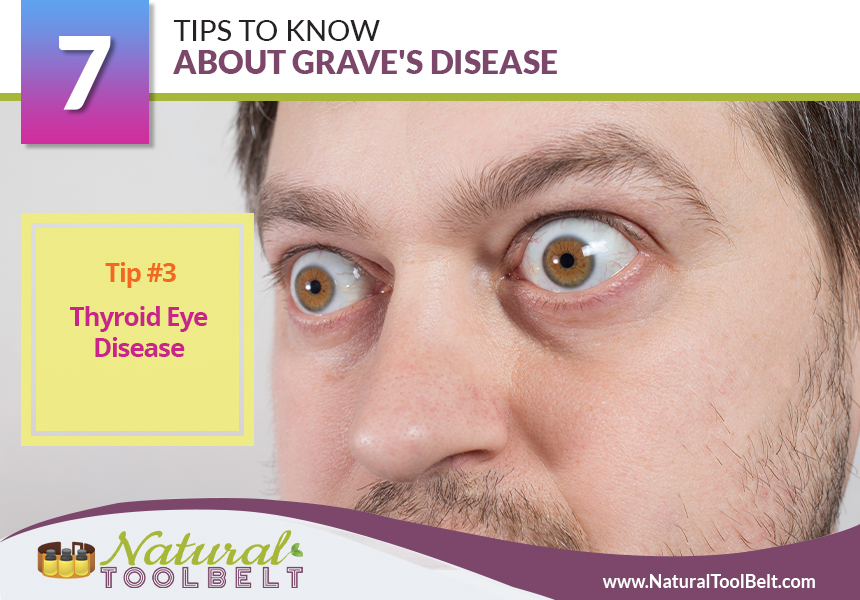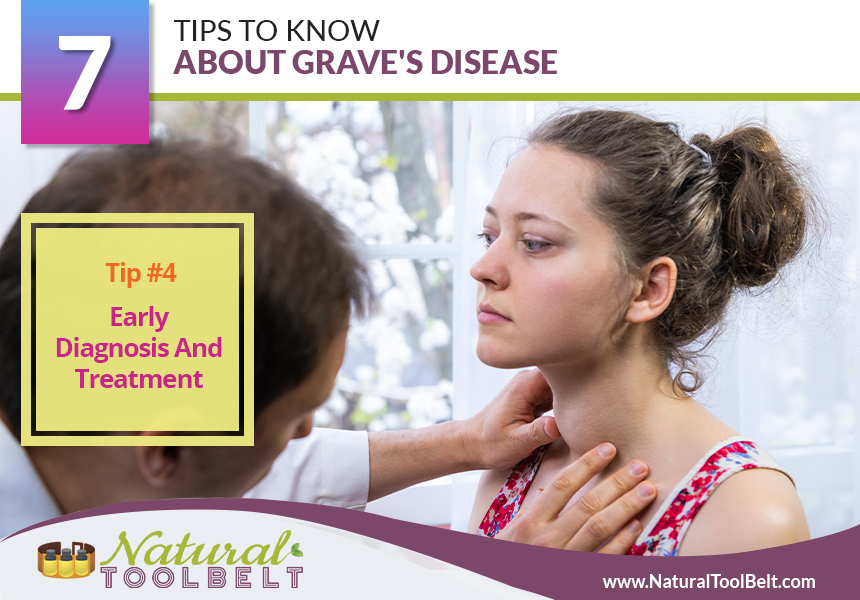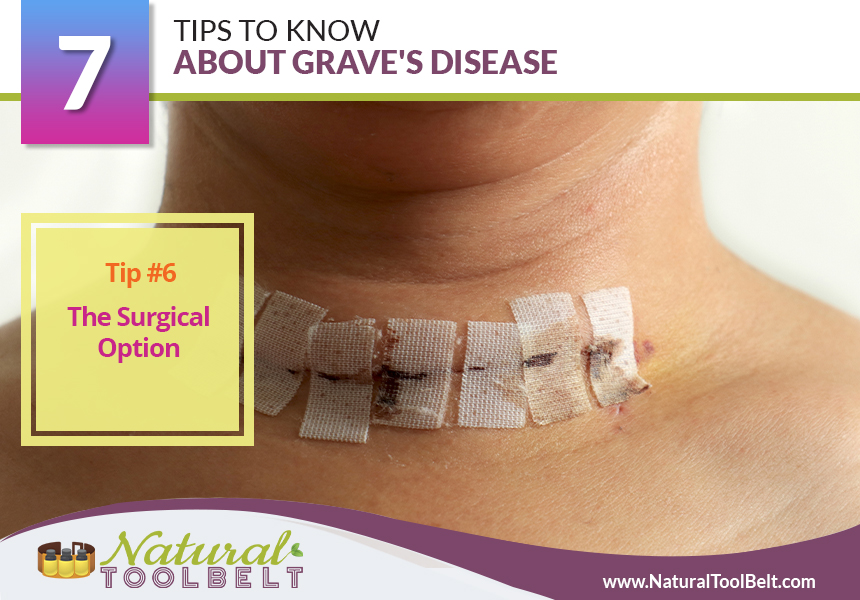7 Tips To Know About Grave’s Disease
Grave’s disease is an autoimmune disease. In Grave’s disease, the immune system creates antibodies that overstimulate the thyroid gland. This causes the gland to enlarge and produce excessive amounts of thyroid hormones. In this article, we will share with you some information about Grave’s disease that can, hopefully, get you back on track to better overall health.
First, we will discuss what to look for and some causes of Grave’s disease. Then, we will talk about thyroid eye disease. Afterward, we’ll go over the importance of early diagnosis and treatment. And finally, we’ll cover several treatment options, including chemical therapy and surgery. Once you have finished reading, you will have the information you need to take control of your Grave’s disease and start enjoying better health.

1What To Look For
For the majority of patients, Grave’s disease escalates and causes havoc in many areas of their lives. It can occur at any age; however, it is most common in women aged in their twenties or thirties. It is estimated that around five to ten times more women are diagnosed than men. The patients of Grave’s disease may have some of the following symptoms: anxiety and irritability, unexplained weight loss, muscle weakness, slight hand tremors, rapid and irregular heartbeat, goiter (enlarged thyroid gland), excessive sweating, and changes in a woman’s menstrual cycle.
Breast enlargement in men is also common. Another symptom is the appearance of reddish, thickened skin on the feet and lower legs. This skin condition is a rare occurrence, usually painless, and not considered serious.

2Causes Of Grave's Disease
As with all autoimmune diseases, heredity is believed to be a factor. People with a family member who also has an autoimmune disease appear to be more susceptible to the disease. Stress and infection are also thought to be possible triggers for those predisposed to the disease.
Those aren’t the only links either. A recent study has found that 30% of women who get Grave’s disease have been pregnant in the twelve months before the onset of the symptoms. This gives a strong indication that pregnancy may be a trigger for some people.

3Thyroid Eye Disease
Grave’s disease can also result in ophthalmopathy or thyroid eye disease. It is believed that the thyroid gland and the eye’s muscles may share a common antigen that is recognized by the antibodies attacking the thyroid. Grave’s ophthalmopathy can occur before or at the same time as other symptoms of hyperthyroidism. Twenty-five percent of Grave’s disease patients have symptoms of this eye disease. The symptoms of Grave’s ophthalmopathy include pressure or pain in the eyes, inflammation of the tissue and muscles around the eyes, retracted eyelids, double vision, gritty sensation in the eyes, and light sensitivity.
The goal in the treatment of Grave’s disease is to control the excessive activity of the thyroid gland. The treatment options include anti-thyroid medication to inhibit the production of hormones by the thyroid gland. Medications to keep the thyroid gland from making too much hormone are generally used for one or two years. For some people, thyroid function returns to normal when these drugs are discontinued. However, for most, the overactive thyroid returns.

4Early Diagnosis And Treatment
Grave’s disease is a condition in which the thyroid gland produces too much hormone (hyperthyroidism). The release of excessive thyroid hormone speeds up the body’s metabolism and some of its processes, such as heart rate. This can have a significant impact on health and well-being.
Although many different conditions can trigger an overactive thyroid, the most common cause is Grave’s disease. Early diagnosis and treatment are essential, as this condition can have a wide-ranging and significant influence on the body. For some people, the symptoms can be mild.

5Radioiodine Or Chemical Therapy
The thyroid gland uses iodine to produce thyroid hormones. Radioiodine therapy is a treatment where oral medication that contains radioactive iodine is taken to destroy thyroid cells. With this treatment, the thyroid gland shrinks. It also produces fewer hormones, and the symptoms gradually reduce over time.
This is a successful treatment that does not harm the other parts of the body or cause birth defects. Radioiodine therapy treatment should not be used for pregnant or breastfeeding women. Some people who are allergic to antithyroid medication and a small percentage of patients resistant to radioiodine treatment may require an operation.

6The Surgical Option
It is not the most common option. However, when appropriate, a total thyroidectomy is the only option that gives an immediate cure to hyperthyroidism. The removal of the thyroid gland takes several hours under general anesthetic.
The patients experience a little discomfort, and recovery is swift. They can function normally, including eating and talking, almost straight away. After surgery, lifetime medication will be needed to provide normal amounts of thyroid hormone to the body.

7How To Treat Ophthalmopathy
The mild eye symptoms of Grave’s ophthalmopathy may be managed by using over-the-counter medication. Artificial tears during the day and lubricating gel at night can be used. Surgery to remove the bone between the eye socket and the sinuses is called orbital decompression.
The air space next to the orbit provides the eyes room to move back to their original position. This surgery can be recommended when pressure on the optic nerve threatens the loss of vision. Although beta blockers do not inhibit the production of thyroid hormones, they do block the effects of hormones on the body. They may have rapid relief for irregular heartbeat, tremors, heat tolerance, sweating, and muscle weakness.

The immune system creates antibodies that overstimulate the thyroid gland, and the result is Grave’s disease. It’s one of the many autoimmune diseases. The thyroid gland enlarges and produces excessive amounts of thyroid hormones. In this article, we shared with you some information about Grave’s disease that can, hopefully, get you back on track to better overall health.
First, we discussed what to look for and some causes of Grave’s disease. Then, we talked about thyroid eye disease. Afterward, we went over the importance of early diagnosis and treatment. And finally, we covered several treatment options, including chemical therapy and surgery. Now that you have finished reading, you have the information you need to take control of your Grave’s disease and start enjoying better health.







